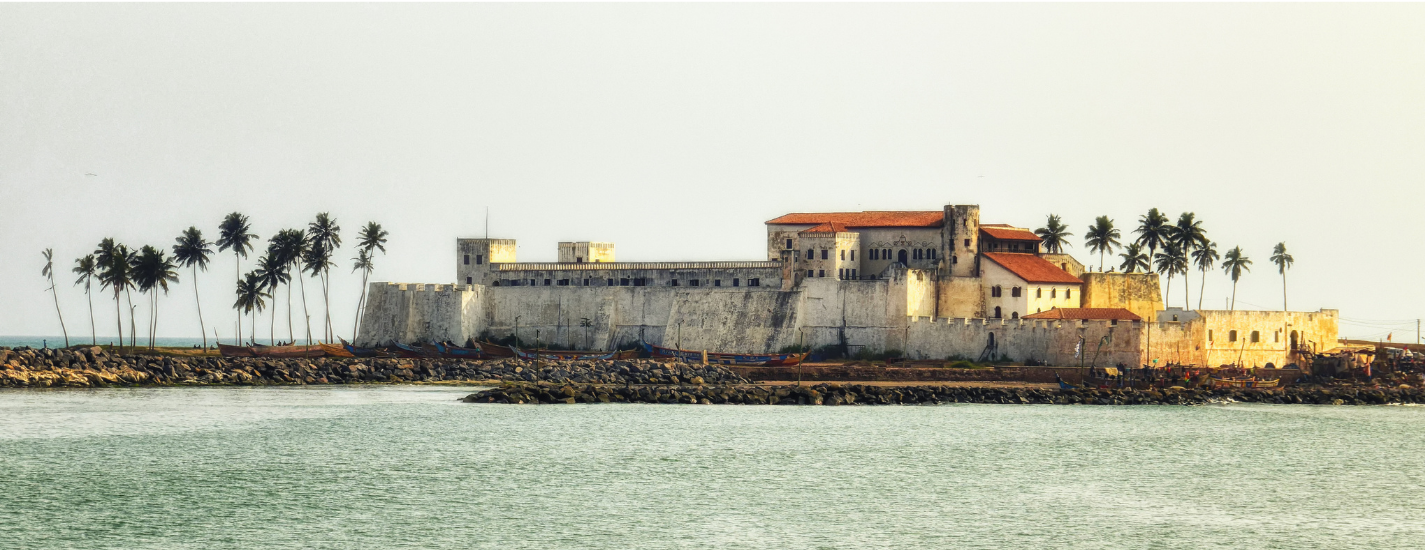
Black History: Ghana's Slave Castle and the transatlantic slave trade
Learn about the rich past of the ancient West African kingdom of Ghana and how history took a dark turn during the transatlantic slave trade.

Learn about the rich past of the ancient West African kingdom of Ghana and how history took a dark turn during the transatlantic slave trade.
Duration : 60 mins Max Size : 50 Destination : Ghana
Category : World History Recommended For : K-12 Schools
Subject :
Before the age of European exploration and colonisation, West Africa was an amalgam of empires and kingdoms. Most notable were Ghana, Mali and Songhai (sometimes referred to as the Mandinka Empire). The former two ruled over much of modern-day Maghreb; all land south of the Sahara desert. These kings controlled trade routes that spanned across the continent both east into central Africa and north towards the Mediterranean coast.
Ghana wasn’t particularly large by today’s standards but it did at one point control territory which stretched from modern-day Mali to Mauritania and Burkina Faso. The empire’s wealth was based on a regular trans-Saharan trade in gold, ivory and slaves who were brought north from black kingdoms south of the desert.
On this exclusive, live, virtual tour we will travel to Ghana and learn about the glorious history of its ancient Kingdoms and how it eventually descended into a dark chapter of slavery. You will visit the Elmina Castle whose imposing 910000 square foot castle (which started off as being a Portuguese trading post in 1482) became one of the main slave depots for three centuries during the transatlantic slave trade.
When the Portuguese first arrived in Elmina, their main commodity was gold. At the rate they were obtaining it, this convinced the Portuguese that a gold mine must exist here. However, when European countries began to invade Africa in order to acquire slaves, Elmina became a must-stop on the slave route and a makeshift jail for prisoners.
On this live tour, you will discover the harsh journey that most captives endured before being sold into slavery on this trip.
The process often started with determining whether or not they were sick enough for the long, difficult journey ahead. They usually desired healthy captives, so they were first checked for their strength. Tools were used to forcefully pry open their mouths and count their teeth. In some cases, slaves were whipped to make them jump and see how strong they were. They were subsequently moved to various dungeons.The slaves were imprisoned in Elmina's dungeons, where the conditions were unspeakably terrible, even by the standards of that period. There were no toilets or bathrooms. In some cases, they had straws on the floor, which they used as a mattress. In all these dungeons, they were given buckets, which they were expected to ease themselves. However, because of the conditions they were in, the chains they had on their feet made it almost impossible for them to get to this bucket. Captives could be kept for three months in custody, waiting for their move to a dark and unknown future.
Before slave ships transported their human cargoes, negotiations were generally completed. However, in a market where the seller had little control over how each slave could be identified, buyers frequently felt compelled to brand their new belongings in the most barbarous of manners. Metallic stamps were heated up to brand their skin with alphabets or numbers. The captives, having been branded and enslaved, were escorted aboard awaiting vessels through the 'Door of No Return'.
The Door, the prisons where slaves were kept and the walls through which they walked all served as reminders of this dark period in history.
Black Africa’s slave trade was largely responsible for helping build Europe into a world power by supplying them with human resources that helped boost Europe's economy and population over many centuries. On this important tour we will reflect about this dark chapter in history and learn lessons for the future.
 Charly Jacob
Charly JacobCharly is one of the Executive Producers at Globe from Home and brings more than two decades of experience in Tourism management into creating special travel experiences.
Charly has been involved in campaigns involving the conservation of environment and is an active team member in our Responsible Tourism projects. His other interests include listening to music and driving.
Once you book this experience, we will send you a confirmation email with a link to join the session. Students and teachers can log in from their individual classes or congregate in one single class/hall and access the tour via the link provided.
Write a public review